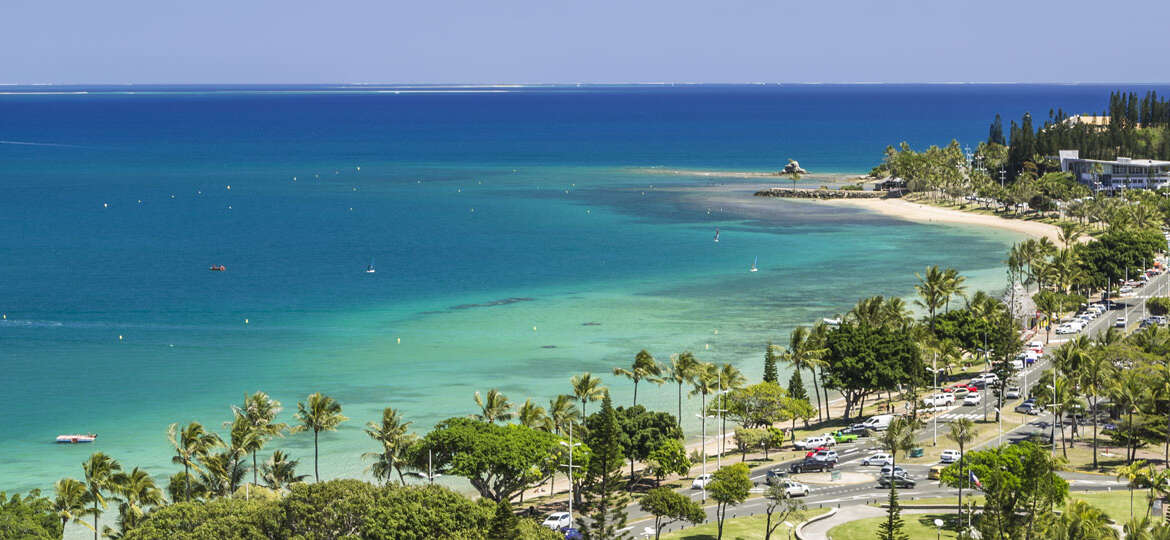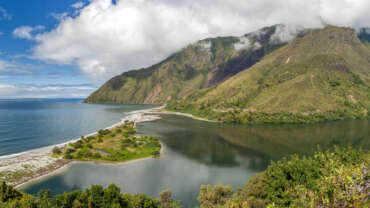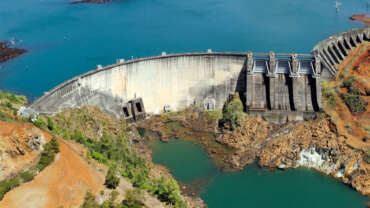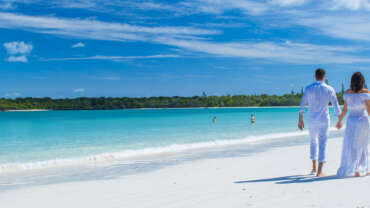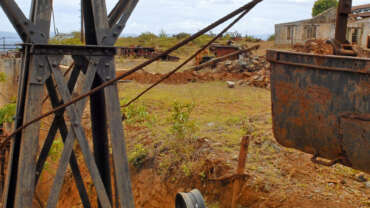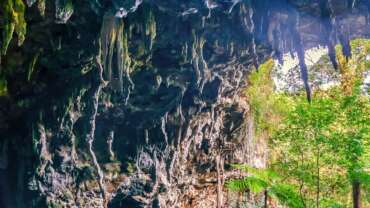Noumea Region of New Caledonia
Nouméa, the capital city of New Caledonia is on the ocean. Several bays extend along the city, providing magnificent beaches and points of view. Besides its natural features, Nouméa also has very attractive cultural offerings for tourists who choose to visit there.
Gorgeous bays and splendid islets
Facing the lagoon, the Caledonian capital is the picture of the Pacific: a city to wander about in and live well, especially on the waterfront. The bay attracted the first Europeans to settle here starting in 1853 and has still kept all its appeal, as testified by the very beautiful beach on the Baie des Citrons and Anse Vata. Offshore in these bays are Îlot Maître and Îlot Canard, that can be reached in only a few minutes by boat. Both offer an ideal setting for a day of exploration or of lounging.
A wealth of culture
Noumea has built its Pacific identity through a mixing of cultures and styles. This cultural diversity is reflected on your plate, but also in the architecture and all the attractions it offers. True artistic heart of the country, museums, art galleries, theaters and cinemas are concentrated in Noumea. You can soak up the heritage of the city.
Although colonial-era houses are scarce nowadays, some have still be beautifully restored, like Maison Célières, Château Hagen or the old Nouméa City Hall, which now houses the city museum.
A city of pleasure
This city of about 100,000 inhabitants offers a range of activities that will inspire you with its diversity. Facing the sea and lined with inviting beaches and islands, you can practice outdoor sports all year long; not only walking, snorkeling, windsurfing and kitesurfing, but also golf, tennis and, of course, swimming.
It’s also a joyful city with many bars, clubs, and two casinos for festive evenings after – and why not – a day of shopping in the various shops of downtown Noumea and Anse Vata. Three spots you can’t miss: Alma Street, Sebastopol Street and the Promenade.
A green and blue city
The recently renovated Aquarium of the Lagoon houses a stunning collection of living underwater species. Its treasures include the pygmy seahorse and the famous nautilus, which is one of the emblems of New Caledonia.
Still, blue isn’t the only color to represent Nouméa; green also has a prominent place. The luxuriance of the vegetation (palms, coconut trees, flamboyants and hibiscus) commonly surprise visitors.
The city is blessed with several parks and gardens when you can enjoy a pleasant stroll. Start with the Zoological Forest Park, located in the heights of the city and offering an enjoyable day of discovery as well as local flora and fauna. Other ‘green lungs’: Coconut Tree Square in the downtown area hosts events and fairs throughout the year, Ouen Toro facing the sea, or even the Nouville Trail to Fort Tereka. The sea pediment was also built to accommodate a beautiful stroll between Orphanage Bay and the Pierre Vernier promenade.
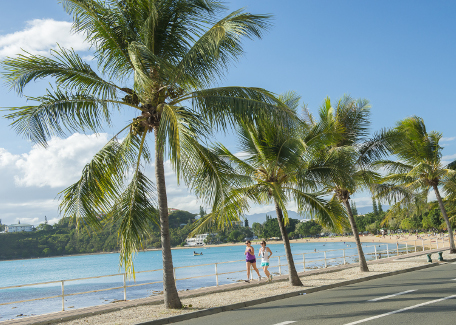
Discover the must-sees in Nouméa
Anse Vata Bay – Nouméa’s beautiful walkway
If Nice can be rightly proud of their Promenade des Anglais, Nouméa’s walkway along the Anse Vata Bay is equally as magnificent. Between two large rocks, the Rocher César towards the pointe Magnin and the famous Rocher à la voile, on the Lemon Bay side, Anse Vata is one of the main tourist spots in Nouméa. On the east side, a pedestrian pathway runs along the long beach, the Roger-Laroque promenade, with many hotels, restaurants, bars, shops and night clubs.
Zoological and forest park
Located on the Montravel heights, in Nouméa, the Michel Corbasson zoological and forest park covers 34 hectares in the middle of the city. Acting as a green space, a botanical garden and a zoological park at the same time, it is a must-see during a stay in Nouméa, at the very least to see the emblematic cagou!
In 1962, the city of Nouméa gave this land to create a nature reserve in order to preserve the heart of the dry forest within the city, as well as several endemic species, including the cagou.
However, the public had to wait until 1972 for the park to open its gates. The zoological park now is home to over 700 animals, and over 130 species. These are mostly birds, because the local terrestrial fauna was essentially made of reptiles until the arrival of the Europeans, who imported species such as the famous Rusa deer.
Place des Cocotiers
The Place des Cocotiers (Coconut Tree Square) is, since the end of the 19th century, the heart of the city of Nouméa. Over a surface of almost 4 hectares (and 400 meters long from east to west), its vast esplanade with a slight slope is a place of meetings, tranquility and festivities all year long.
In 1855, Paul Coffyn, a brilliant engineer, was put in charge of drawing the first urban plans for what the future city of Port-de France (which became Nouméa in 1866) was to become. He planned on building a square where it is located today, which was then covered by the sea.
Once the first embankments were built, in 1861, the first portion of the square was called “jardin de l’infanterie marine” (the marine infantery gardens). Located at the eastern extremity of today’s Place des Cocotiers, it took its definitive name of Place Feillet in 1903.
Baie des citrons
Located less than 10 minutes from the city center, Baie des Citrons is today the most connected seaside spot in the Caledonian “capital”. Stores, bars, restaurants and night clubs follow one another along the promenade, much to the delight of tourists and Nouméans…
The origin of the current name of the Bay, previously named Anse du Styx from the name of an old steam sloop, remains questionable. For some, the Bay is named because of lemon trees planted there before 1900 (they are no longer there). For others, it has never been a matter of lemon trees! The Bay took its name from six huge trunks loaded on a ship that ran aground there.
The anecdote is without doubt more ironic than true but it speaks volumes about the mystery surrounding the Bay which has become, over time, one of the main tourist emblems of the city of Nouméa.



